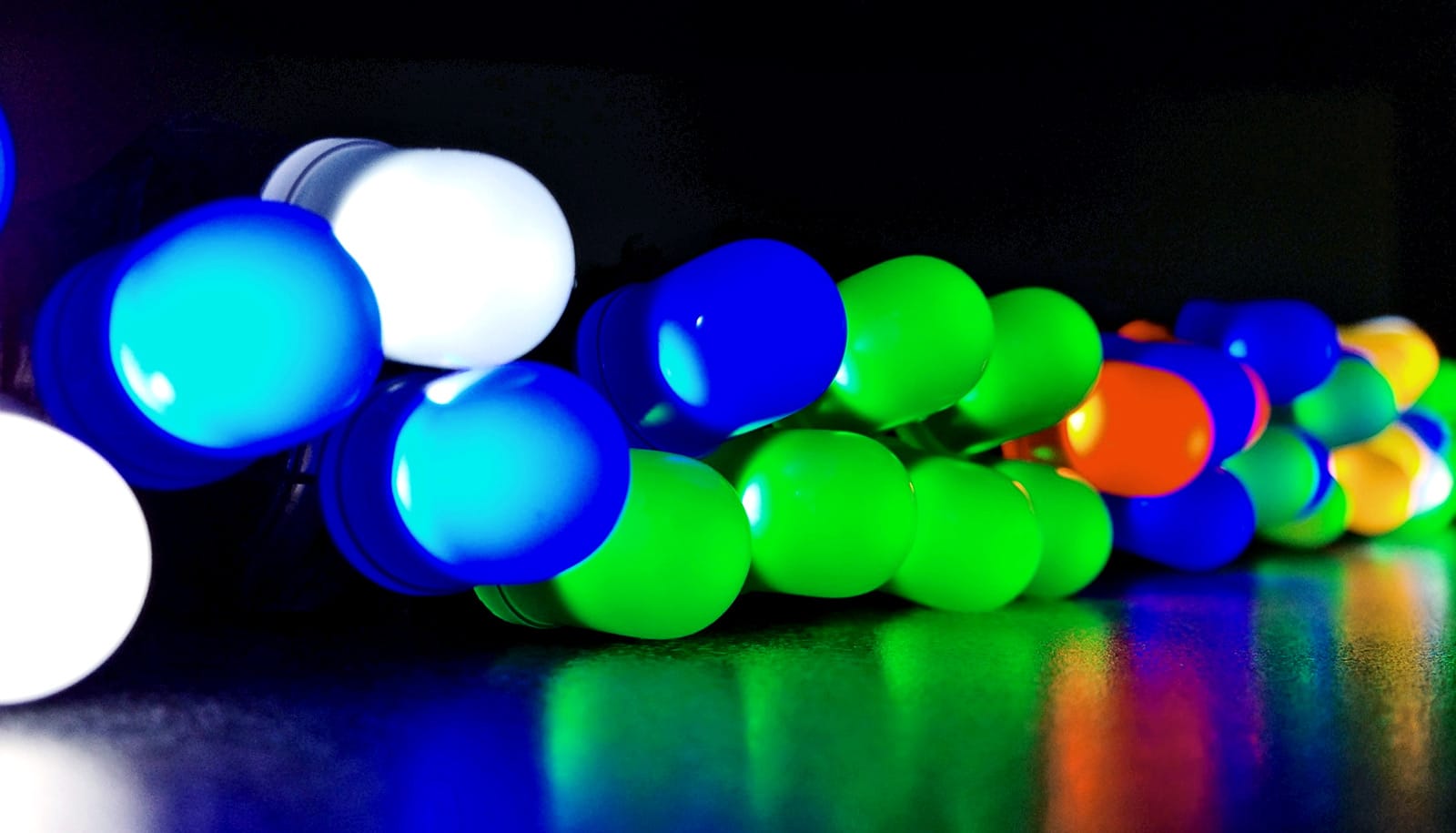Researchers have come up with a new way to address the durability of perovskite nanocrystals.
Perovskite nanocrystals hold promise for improving a wide variety of optoelectronic devices—from lasers to light emitting diodes (LEDs)—but their durability problems limit their broad commercial use.
To solve the problem, researchers encased the perovskite inside a double-layer protection system made from plastic and silica. In Science Advances, the team describes a multistep process to produce encased perovskite nanocrystals that exhibit strong resistance to degradation in moist environments.
“Perovskite nanocrystals are highly susceptible to degradation, particularly when they come into contact with water,” says Zhiqun Lin, a professor in the School of Materials Science and Engineering at Georgia Institute of Technology.
“This dual-shelled system offers two layers of protection while allowing each nanocrystal to remain a distinct and separate unit, achieving the maximum amount of surface area and other physical characteristics of the perovskite needed for optimizing optoelectronic applications.”
Star-shaped plastic
The term perovskite refers to the crystal structure of the material, which is generally composed of three parts: two cations of different sizes and an anion in between. For decades, researchers have tested substituting various chemicals into the structure to achieve unique characteristics. In particular, perovskites containing halide compounds such as bromide and iodine can act as light absorbers and emitters.
For this study, the team worked with one of the most common halide configurations, formed from methylammonium, lead, and bromide.
The process involves first forming star-shaped plastic molecules that could serve as “nanoreactors” by growing 21 polymer arms on a simple sugar molecule. Then, once precursor chemicals for the silica and perovskite nanocrystals are loaded onto the plastic molecule, several stages of chemical reactions produce the final system.
After the star-shaped plastic has played its role as a nanoreactor, the star-shaped components remain permanently attached, almost like hair, to the silica, which encases the perovskite. The hairs then serve as the first layer of protection, repelling water and preventing the nanocrystals from clumping together. The subsequent layer of silica adds further protection should any water get past the water-repelling plastic hair.
“Synthesis and applications of perovskite nanocrystals have been a rapidly evolving research field over the past five years,” says coauthor Yanjie He. “Our strategy, based on a judiciously designed star-shaped plastic as a nanoreactor, enables unprecedented control in the crafting of high-quality perovskite nanocrystals with complex architecture, which is inaccessible in conventional approaches.”
Many uses for perovskite nanocrystals
To test the material, the researchers coated glass substrates with a thin film of the encapsulated perovskites and conducted several stress tests, including immersing the entire sample in deionized water.
By shining ultraviolet light upon the sample, they found that the photoluminescent properties of the perovskites never diminished during a 30-minute test. For comparison, the researchers also immersed unencapsulated perovskites in water and watched as their photoluminescence vanished in a matter of seconds.
The new method unlocks the possibility of tuning the surface characteristics of the dual-shelled nanocrystal to enhance its performance in a greater range of applications, Lin says.
The process of fabricating the new perovskite nanocrystals from the star-shaped plastic was also unique in that it employed low-boiling point solvents with low toxicity. Future research may center on developing different perovskite nanocrystal systems, including all-inorganic perovskites, double perovskites, and doped perovskites.
“We envision that this type of perovskite nanocrystal will prove very useful for creating durable optoelectronic devices for bioimaging, biosensors, photonic sensors, and radiation detection, as well as next generation LEDs, lasers, and scintillators,” Lin says. “This is because these hairy perovskite nanocrystals carry unique advantages, including high defect tolerance, narrower emission bands, and high scintillation efficiency.”
The Air Force Office of Scientific Research, the National Science Foundation, the Defense Threat Reduction Agency, and the Department of Energy supported the work.
Source: Georgia Tech



